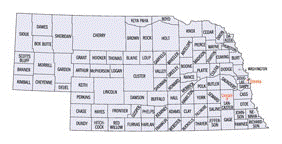Geography Program

Geography Program: Faculty Publications
Document Type
Article
Date of this Version
2003
Abstract
Spatial and environmental dimensions of religious behavior, artefacts, and attitudes are grist for the geographer’s intellectual mill because spiritually motivated convictions and actions play an important role in human affairs. It is not surprising, therefore, that the geography of religion and belief systems is an important, emerging field of study. We commence this chapter with a definition of the field, particularly as it entails distinctions that arise out of the highly personal nature that religious belief is accorded in the academy and society at large. A limited review and summary of trends in the field over the past decade follows, building on Kong’s (1990) and Sopher’s (1967, 1981) overviews. Although North American geographers are emphasized here, research in the geography of religion is thoroughly entwined in terms of scholars’ national origin, university training, and research perspectives, thus making distinctions in nationality difficult. Moreover, geographers who do not consider themselves to be geographers of religion and numerous nongeographers also make significant contributions to this field because their work clearly incorporates both religious and geographic components in their analysis and subject matter. We note that traditional empirical studies largely dominate the work published in the last decade. Nevertheless, humanistic research (Weightman 1996; Cooper 1997a; Prorok 1997; Osterrieth 1997), and the application of contemporary critical theory (Fielder 1995; Kong 1993a, b; Prorok 2000) in this field is gaining ground, particularly via recent dissertations and presentations at AAG meetings. Additional comments about future challenges and opportunities conclude the chapter.


Comments
Published in Geography in America at the Dawn of the 21st Century (editors Cort J. Willmott and Gary Gaile), chapter 48, pages 759-767. Copyright 2003, Oxford University Press. Used by permission.